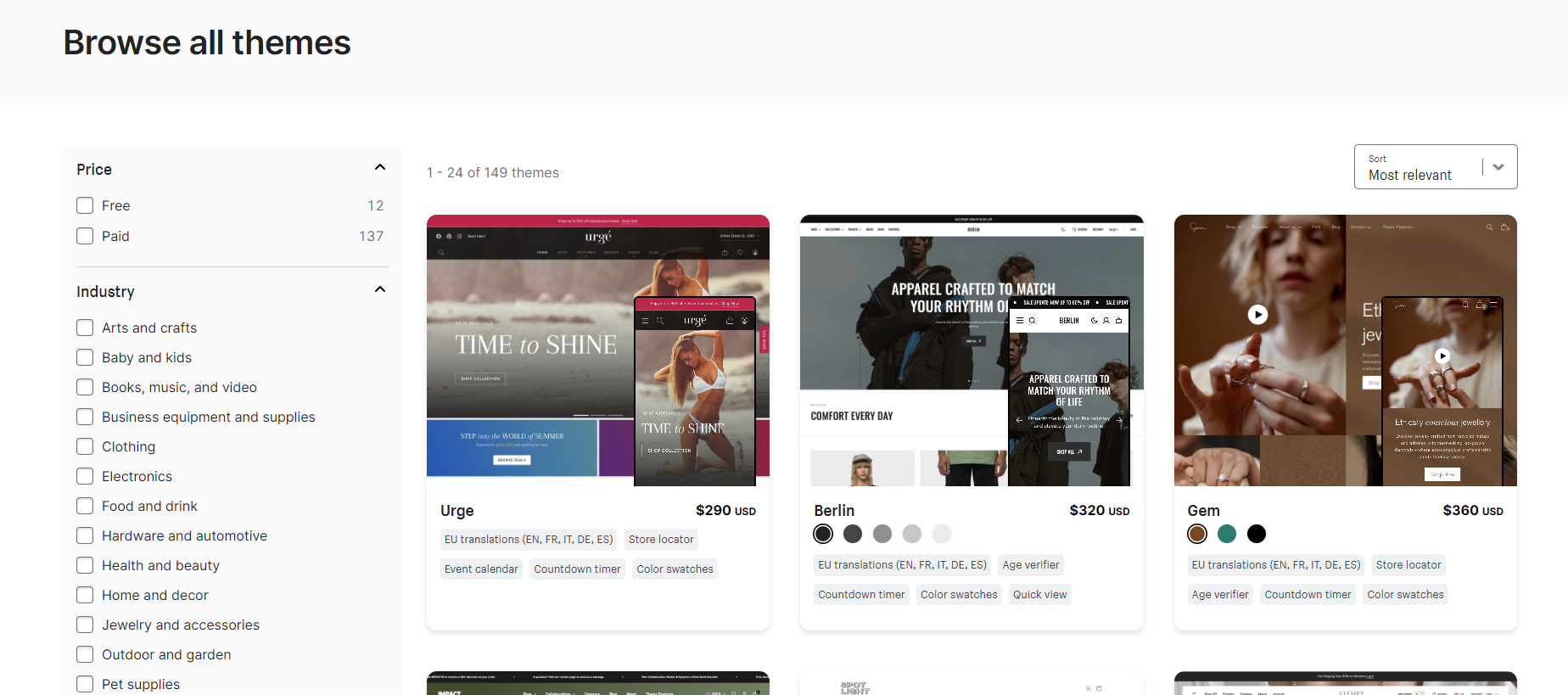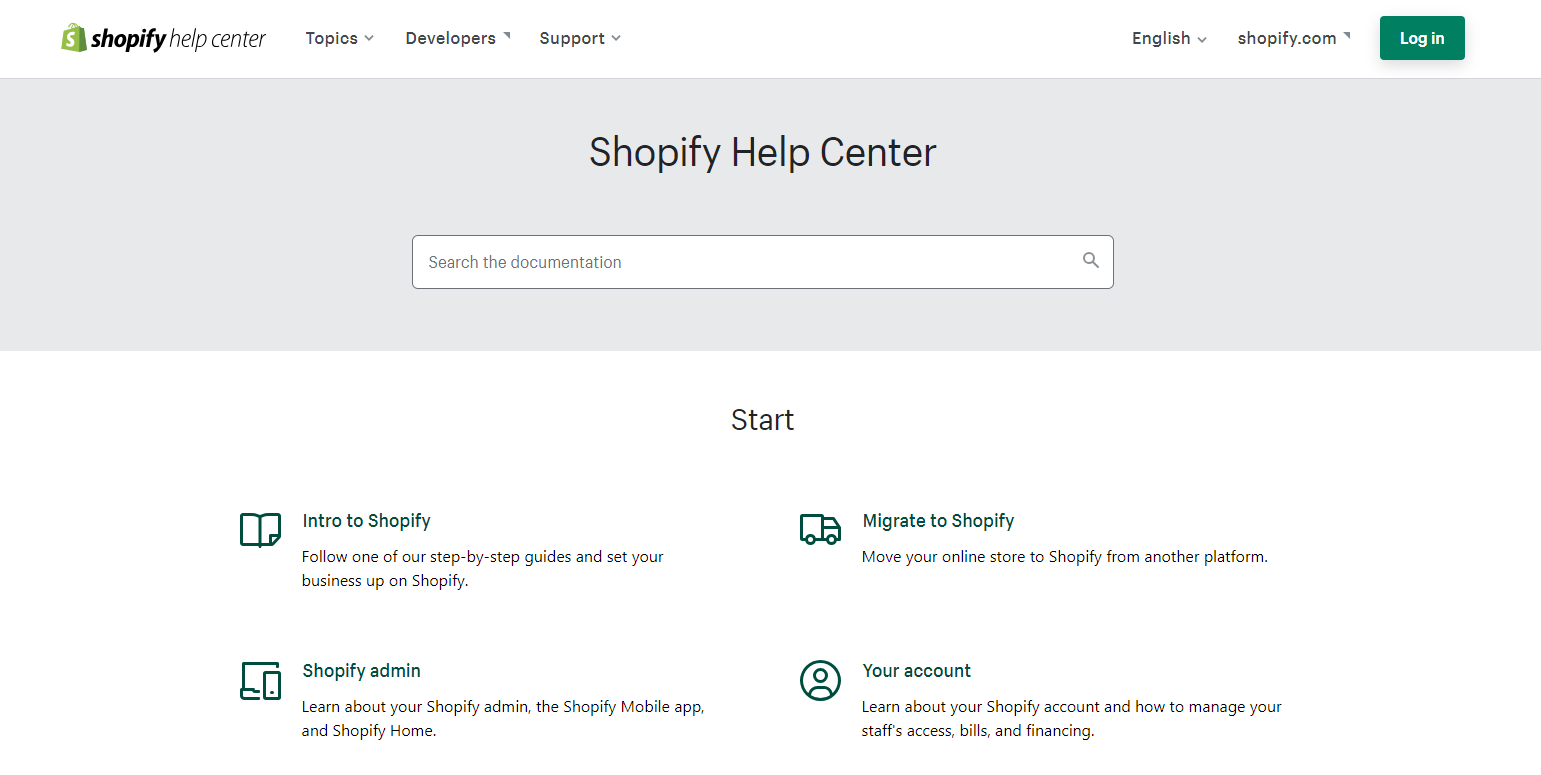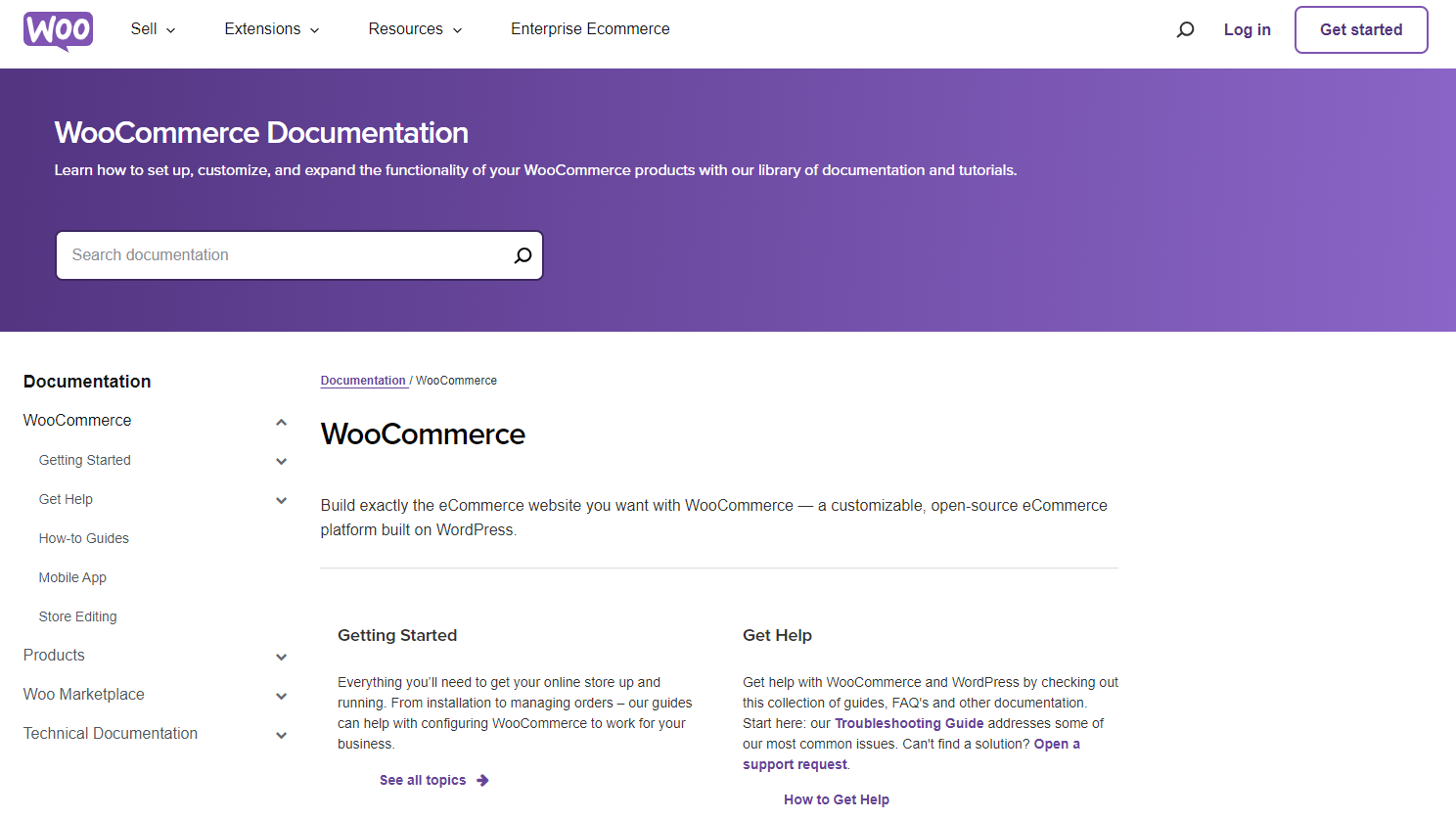In the ever-evolving world of e-commerce, businesses and entrepreneurs seeking to establish a robust online presence are often faced with the critical decision of selecting the right platform to power their online stores. Two of the most popular and influential names in this field are Shopify vs WooCommerce. Both platforms offer powerful tools and features to help businesses build and manage their online stores, but each brings its own set of unique characteristics and functionalities to the table.
In this comparative analysis, we dive into the distinctions between Shopify and WooCommerce, examining their strengths, weaknesses, and overall suitability for diverse e-commerce ventures. By understanding the fundamental differences between these platforms, you can easily make informed decisions, aligning your business needs with the most appropriate e-commerce solution.
Throughout this exploration, we will consider various aspects, including main features, cost, customer support, and pros and cons. Whether you are a startup, a small business owner, or an established enterprise, luckily, our Shopify vs WooCommerce comparison can empower you to make the right choice that optimizes your online store’s performance and drives your e-commerce success. Now, let’s check them out.
Shopify Vs Woocommerce: Background Infor
Shopify

Shopify is one of the leading all-in-one e-commerce platforms that helped a lot of merchants easily create and run their online stores. It was established in 2006 and has rapidly grown to become the most reputable e-commerce solution around the world. It provides a simple interface that enables users to design their own website, handle inventory, complete orders, and receive payments. Additionally, Shopify offers various themes and applications to personalize your store and enhance its features.
Woocommerce

Similarly, Woocommerce is also one of the prevalent e-commerce platforms trusted by plenty of WordPress users around the world. This platform was launched in 2011 as a plugin for the widely popular WordPress content management system. Currently, it has over 5 million active installations. It is an open-source plugin that allows website owners to add powerful e-commerce functionality to their WordPress websites.
From its seamless integration with WordPress to its vast selection of themes and plugins, WooCommerce empowers users to create visually appealing and highly functional online storefronts without the need for extensive technical knowledge.
Shopify Vs Woocommerce: What are the differences?
Ease of Use
Regarding ease of use and user experience, Shopify and WooCommerce present different approaches and advantages.
First of all, Shopify is known for its simplicity and user-friendly interface. It provides a hassle-free setup process and requires minimal technical knowledge to get started. With its drag-and-drop functionality, users can easily customize their online stores without any coding skills.
Additionally, it is a hosted e-commerce platform, which means that you don’t need to worry about setting up hosting or managing server-related tasks. The platform provides an intuitive dashboard and a guided setup process that allows users to simplify the process of creating an online store. Further, you can fully control other tasks such as adding products, managing inventory, and processing orders through the Shopify admin panel.
Woocommerce, on the other hand, has a much steeper learning curve for beginners compared to Shopify. It requires you to have a bit of technical knowledge to set up it initially. However, if you are familiar with WordPress, the process of setting up Woocommerce will be extremely straightforward. One disadvantage of Woocommerce is that you have to install WordPress first, set up hosting and then add the Woocommerce plugin by yourself.
Besides that, Woocommerce also offers more customisation options than Shopify, so this flexibility can be overwhelming for beginners and it requires more time to customize the store to suit their requirements.
Design and Themes
Designs and themes play a crucial role in creating a visually appealing and engaging online store. Both Shopify and WooCommerce offer various design options through themes, but they differ in terms of availability, customization capabilities, and overall design aesthetics. Let’s compare Shopify vs Woocommerce in this aspect:
It can not be denied that Shopify comes with over 140 pre-made themes that help you quickly create a stunning online store instead of building your site from scratch. They cover different industries including arts and crafts, baby and kids, clothing, electronics, food and drink, healthy and beauty, outdoor and garden, etc. Further, they are completely easy to install and customize to suit your liking via the user-friendly admin panel.
Nevertheless, most of Shopify’s themes are paid, it only offers 12 free themes to choose from.

Woocommerce only provides you with 74 themes in the Woocommerce Theme store. But Woocommerce is indeed a plugin, so it can work well with a vast library of WordPress themes. If you are using Woocommerce, you will have the freedom to find the perfect design from unlimited themes in the WordPress repository. In addition, Woocommerce comes with a lot of extensive customization options that give you complete control over the appearance and functionality of your store.
However, the variety of WooCommerce themes means that quality may vary. Users need to ensure they select themes that are regularly updated and well-maintained to avoid potential compatibility issues with plugins and future WordPress updates.

Payment options
Both Shopify vs Woocommerce provides you with different payment gateway options that allow your customers to choose their favourite payment methods. By providing a variety of options, you can cater to a broader customer base and enhance the overall shopping experience. However, there is a big difference between Shopify vs Woocommerce regarding transaction fees.
Shopify offers a seamless and integrated payment solution called “Shopify Payments”, which allows you to accept credit card payments directly on your Shopify stores without the need for a third-party payment gateway. But this feature is only available in more advanced Shopify plans. In contrast, if you want to use a third-party payment gateway, you have to charge 2% per transaction.
Although Woocommerce does not have its own integrated payment solution, it allows users to integrate with various payment gateways based on their preferences and location such as PayPal, Stripe, Square, Amazon Pay, and many more. Especially, it doesn’t charge any fee per transaction.
Plugins and Apps
Installing additional plugins or apps helps you extend more functionalities of your e-commerce website such as SEO, marketing, shipping and much more.
Luckily both platforms provide you with tons of apps and plugins to choose from. Shopify has a dedicated App Store with a wide selection of plugins and integrations. The App stores of Shopify include a mix of free and paid apps that cover different areas such as marketing, sales, shipping, customer service, analytics, and more. However, when compared to WooCommerce, Shopify has a significantly smaller number of available apps, with only around 1,200 options, both free and paid.

Whereas you can take advantage of over 59,000 plugins from the WordPress repository. Additionally, you can access a lot of Woocommerce extensions available on Woocommerce.com. With the diversity of WordPress plugins, you may need to invest more time in finding and configuring the right plugins for your specific needs.

Security
As an e-commerce website owner, you need to ensure the security of customer data, financial information and overall website integrity. Because once your website is safe, you can build trust and confidence with your customers, protect your site against malicious attacks, avoid downtime and loss of revenue and much more.
Shopify ensures your security by handling any security breaches and safeguarding your website from hackers as it is a hosted e-commerce platform. Although it does not feature any member areas, it does provide strong password protection for your customers’ logins.
In contrast, WooCommerce operates alongside WordPress and is a self-hosted platform. While WooCommerce provides certain security features, it largely depends on your choices to enhance website security by selecting appropriate tools. As a result, you will need to manage the security measures either personally or through your hosting provider.
SEO optimization
If you desire for your website to appear on the search engine results pages (SERPs) of Google, it is essential to prepare for search engine optimization (SEO).
Shopify includes a lot of powerful SEO apps that assist with fundamental SEO techniques like managing meta information and website content. But the selection may not be as extensive as the WordPress repository. Additionally, it’s worth mentioning that Shopify websites generally load faster than WooCommerce websites. This can further enhance the visibility and ranking of your site on Google.
WooCommerce is seamlessly integrated into WordPress, so it provides users with a vast of remarkable SEO plugins such as Yoast SEO, or Rank Math that enable them to modify various on-page elements such as body content, URLs, meta descriptions, and alt tags to improve their search engine rankings.
Moreover, WordPress is widely recognized for its SEO-friendly structure and capabilities, making WooCommerce a preferred choice for users who prioritize advanced SEO practices. Also, the significant drawback of Woocommerce is that its SEO optimization requires more manual set-up and configuration compared to the more automated approach of Shopify.
Hence, if you want to get a better ranking for your website, then choosing Woocommerce will be more suitable.
Dropshipping
Once initiating an online business platform, it is crucial to guarantee that customers receive their requested items. This involves incorporating delivery providers into your website.
Fortunately, you have the option to choose from various well-known sellers on Shopify who can ship your products. The expenses may differ, including their own monthly subscription charges or one-time fees. However, your choices are restricted to the apps offered by Shopify.
WooCommerce provides the opportunity to try numerous choices and determine your specific requirements. For instance, if you are a small company with infrequent deliveries, you may prefer a per-item delivery option instead of a monthly subscription. Therefore, we consider woo-commerce to excel in terms of this particular feature.
Customer support
Without a doubt, Shopify has a far superior support system compared to Woocommerce because it offers 24/7 support via live chat, email, social media and expert support. Besides that, it provides you with a collection of valuable knowledge bases with many articles, tutorials, and guides to help you deal with multiple common issues and even learn how to use the platform effectively.
Plus, Shopify’s customer support is known for its responsiveness and helpfulness, making it an excellent option for merchants who value readily available assistance.

On the contrary, Woocommerce is a self-hosted platform, so it does not offer direct customer support through the platform itself. But it doesn’t mean that you can not find any assistance for your issues. You can use available online resources and documentation of Woocommerce to handle your problems. Alternatively, you can access the WordPress community which includes forums, user groups, and third-party websites offering support and solutions for WooCommerce-related inquiries.

Cost
As you can see in the screenshot below, this platform currently provides you with 3 pricing plans including Basic, Shopify and Advanced. The paid package starts at $25/month. In addition, it also offers a 3-day free trial and pays $1 per month for the initial three months on the Basic plan. Thanks to that, you will have an opportunity to evaluate the platform at a very affordable price.

Despite the fact that Woocommerce is completely a free plugin, you will have to pay for extra services such as domain names, SSL certification, and hosting accounts. The prices for these services can differ. For example, a domain name typically costs around $9 per year. The price of SSL certificates can range from free to $100 per year. For hosting service, it may range from $5 to $30 depending on the hosting company that you choose.
Further, if you want to extend the functionality of your website, it is essential to use advanced extensions. And of course, it costs extra money for premium plugins and extensions.
Shopify Vs Woocommerce: Pros and Cons
Shopify
| Pros | Cons |
|
|
Woocommerce
| Pros | Cons |
|
|
Shopify Vs Woocommerce: Which one should you use?
To sum up, both Shopify vs Woocommerce are robust e-commerce platforms in the market that allows you to launch your online store easily. However, in order to decide which one is the best choice between the two is a difficult task because it depends on your individual abilities and personal preferences. We will give you some suggestions:
If you are looking for an all-in-one solution that is easy to use even for beginners, then using Shopify is a perfect choice. In addition, Shopify also has an excellent support team and a lot of useful integrations. But your expenses can increase due to transaction fees, and extensions cost.
In contrast, if you want a cost-effective solution that allows you to have complete control over your website, we highly recommend using Woocommerce for your website. Another benefit is that Woocommerce will be better for SEO and scaled up enormously.
What’s your point of view? Which is the best solution for your website? Don’t hesitate to share with us your selection in the comment below. Hopefully, our blog provide you with a lot of valuable information. By the way, you can drop by our website to discover tons of stunning, eye-catching Shopify templates.


